Puerco Pueblo
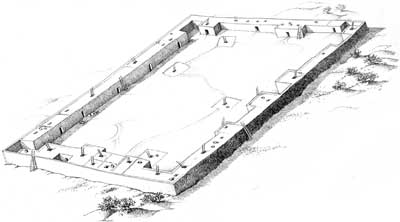 |
Puerco Pueblo stood one-story high, with 2 to 3 rows of connected rooms of
approximately 100 rooms surrounding a central plaza.
Within the plaza were several rectangular ceremonial roooms called
kivas.
The village was a lively center even after the abandonment of larger
Mesa Verde and Chaco Canyon pueblos to the northeast.
It was inhabited from about A.D. 1250 to the late 1300s, and housed a
number of families. The nearby river provided the water that nourished plant and
animal life necessary for this pueblo community.
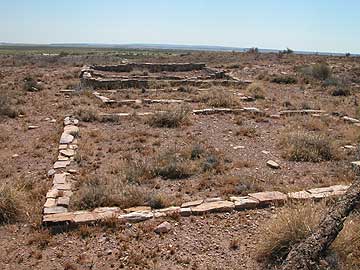
|
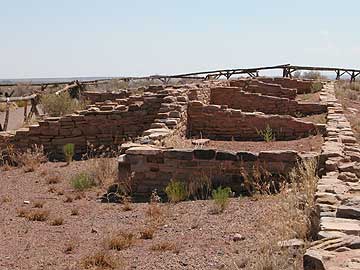
|
The residents of Puercod Pueblo farmed the dry slopes below the village, growing cotton, corn, squash, and beans, while hunters sought game. Artisans created and decorated clay pots. On many days the pueblo's protected plaza bustled with activity. Imagine the sounds of metates grinding corn, of stone tools being chipped into shape, of chants or songs from the kivas, and of children's laughter.
Eventually, the people of Puerco Pueblo left, joining with the ancestors of today's Hopi or perhaps Zuñi people. Fragments of their buildings and tools, and their petroglyphs on nearby rocks, remain to tell us of their existence.
Pottery decorated a Puerco Pueblo shows influence of two overlapping nearby cultures, the Western Pueblo to the north and the Mogollon to the south.
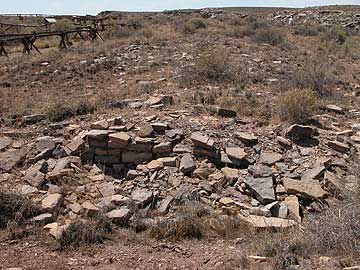
|
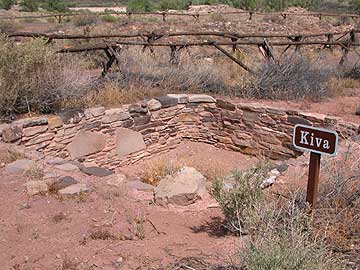
|